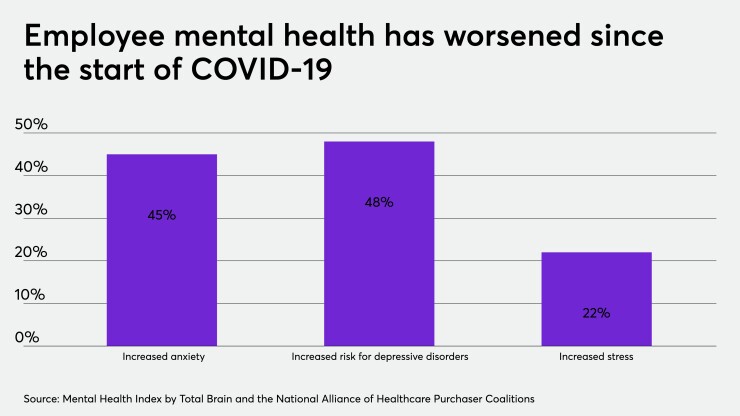As we look ahead with hope and anticipation of things returning to "normal," there's also some trepidation about what new changes will come, especially when it comes to work. After experiencing a year full of extraordinary change, the desire for stability has never been greater.
This shift in perspective — from wanting something new to wanting things to return to "normal" — is a natural reaction to major events. So, how do organizations support employees who are at a point of "change fatigue?"
Read more:
First, it's important to recognize that this moment in history has impacted more than just the office space. Research from
At LifeSpeak, we are fortunate to work with leading mental health and wellness experts every day. We have gathered some of their most helpful tips for employers and employees to help them through this challenging time in which the separation between home and work disappeared for many.
Be on the lookout for burnout. A global pandemic, school closures, and a rocky economy combined with the everyday stress of working life can
Read more:
Hina Khan, Success Coach and registered psychotherapist
Encourage connection. A recent national
If possible, employers should explore ways to support their employees through community opportunities outside of working responsibilities, especially when families traditionally gather together. For example, Hina Khan
Support the set-up. It is easy for employers to overlook the resources employees need to effectively work from home. While most companies have given workers the necessary tools to do their job at home, many standard workplace features are difficult to replicate.
"Many of us are working in makeshift workstations, using kitchen tables, beds, or desks that are not meant to be worked at for a full day," says Shona Anderson, Certified Ergonomist. "An improperly set-up workspace may not cause issues for shorter durations, but spending hours working this way can wreak havoc with the muscles in your neck, shoulders, and upper and lower back." To help employees get their work set-up straight,
One final thing employers need to address is the wellness resources they provide to employees. Check that your perception of employees' level of satisfaction with the health and wellness benefits you are providing is aligned with what your employees are saying. Conduct an anonymous survey to understand what issues workers need support on, whether it's balancing work with family obligations, identifying the signs of burnout, creating a safe and healthy work environment at home, or ways to feel less alone during this trying time.
As part of your assessment. also consider the level of support that your employees are looking for. Are they seeking expert information and tips? Do they want to speak directly to an expert? Do employees want options for both? Many best-in-class organizations have realized that a one size fits all approach does not work for all and have implemented various wellness support levels.
In summary, employers should start from the employee's perspective on what constitutes their wellness needs and, from there, provide the appropriate resources that can be easily accessed, any time and anywhere. With the right tools, employers can offer a wellness program that is manageable, cost-effective and results in a more engaged and energized workforce.






